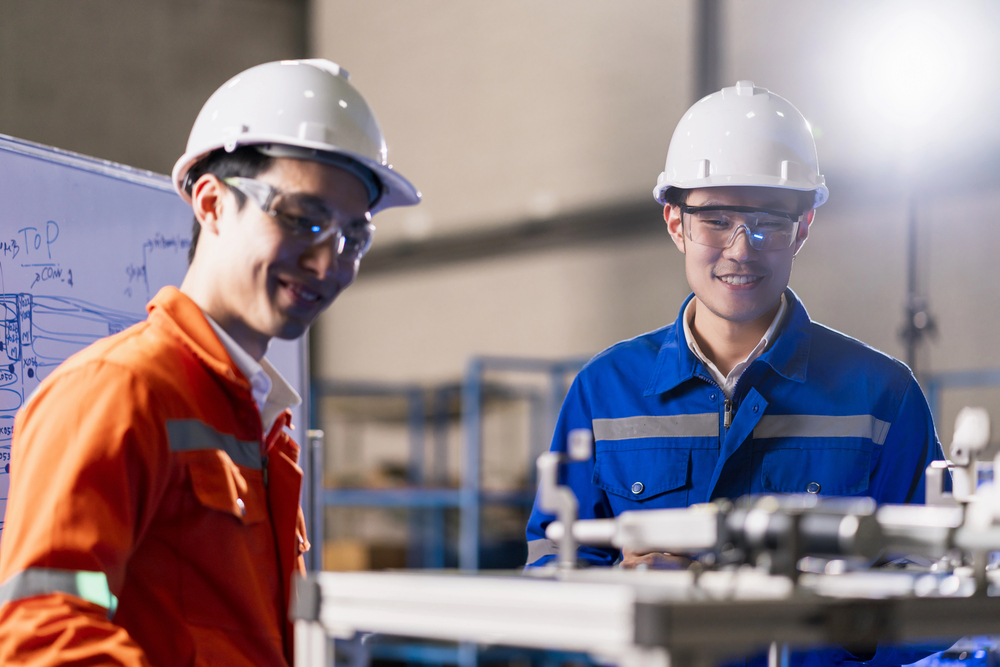Ensuring Safety During Laboratory Renovations: Best Practices
Ensuring Safety During Laboratory Renovations: Best Practices
When planning a lab renovation, safety should be a top priority. From laboratory remodeling safety tips to comprehensive lab renovation safety protocols, ensuring the safety of your staff, equipment, and the public is paramount. Implementing proper safety measures protects those working in the lab and makes sure the project runs smoothly and meets industry regulations.

Assess Risks Before Renovation Begins
ard creating a safe renovation plan. Being proactive minimizes risks, whether it’s dust, debris, or interruptions to utility services.
-
- Dust and Debris: Lab renovations often produce dust, and debris that could harm your staff. Install containment measures to limit exposure.
-
- Utility Disruptions: Renovations can cause power, water, or gas interruptions. Plan for safe shutdowns and temporary utility setups.
Involve experts early. Professional contractors with lab renovation experience understand the risks and help you implement effective safety solutions.
Follow Lab Renovation Safety Protocols
Establish lab renovation safety protocols before construction begins. Protocols should include procedures for hazardous material handling, emergency response, and daily safety checks. Make sure these protocols are clearly communicated to all staff involved in the renovation.
-
- Clear Signage: Use signs to warn staff of hazards, restricted areas, and emergency exits.
-
- Personal Protective Equipment (PPE): Check if everyone is wearing appropriate PPE like safety glasses, hi-vis vests, safety toed shoes, hard hats, etc.
-
- Restricted Access: Limit access to the renovation site. Only authorized personnel should enter construction areas.
A well-organized safety plan reduces the likelihood of accidents and improves overall project efficiency.
Keep Communication Open Throughout the Renovation
Maintaining clear communication is key to lab renovation safety. Everyone involved must be on the same page regarding tasks, schedules, and safety measures.
-
- Daily Briefings: Hold safety briefings at the start of each workday. Make sure everyone understands the tasks and hazards involved.
-
- Emergency Procedures: Train all personnel on emergency evacuation routes and procedures. Display evacuation maps clearly and make sure alternative exits are accessible.
Clear communication reduces confusion so that everyone can act swiftly in case of an emergency.
Plan for Future Flexibility
Laboratory remodeling safety tips include designing for future flexibility. Renovating your lab to accommodate future growth helps prevent additional disruptions later on. Consider how your lab’s needs may change over time and plan the layout accordingly.
-
- Future-Proof Design: Include flexible furniture systems that can easily be rearranged. This makes certain that your lab space can evolve without major renovations.
-
- Adaptable Utilities: Plan for expansion by leaving room for additional outlets or plumbing installations.
A lab designed for growth allows you to stay ahead of expanding needs without costly future remodels.
Keep Emergency Protocols Ready
Make sure your lab renovation includes safety measures for emergencies. Whether it’s a fire, chemical spill, or equipment failure, your team needs to know how to respond swiftly.
-
- First Aid Kits: Place first aid kits in easily accessible locations. Make certain about all team members know where to find them.
-
- Fire Safety: Install fire extinguishers in key locations. Know your lab's fire escape routes and check if they are free of obstacles.
-
- Chemical Safety: If your lab handles hazardous chemicals, ensure safe storage and handling protocols are followed. Use proper labeling and be certain your team is trained to handle chemicals safely.
Emergency preparedness is a part of lab ren
Maintain a Clean Environment During Construction
A clean work environment reduces risks and keeps the project on track. Make sure that all construction debris is removed daily, and hazardous materials are stored and disposed of properly. This promotes lab renovation safety and helps your renovation team work more efficiently.
Final Walkthrough and Inspections
Once the renovation is complete, conduct a final safety inspection to make sure that all systems are functioning correctly. Make sure that all safety equipment, such as fume hoods or biosafety cabinets, are installed properly and meet necessary safety standards.
-
- Lab Equipment Safety: Check that all equipment is in good working condition and that electrical systems meet safety codes.
-
- Compliance with Regulations: Ensure your new lab complies with local and industry regulations, such as those set by OSHA or the National Fire Protection Association (NFPA).
Ready to Start Your Safe Lab Renovation?
Renovating your lab doesn't have to be risky. By following proper lab renovation safety protocols and laboratory remodeling safety tips, you can ensure a smooth, efficient, and secure renovation. If you’re planning a renovation, PSA Laboratory Furniture can guide you every step of the way, ensuring your lab is safe, efficient, and future-proof.
Contact us today for expert lab renovation services and get your quote!